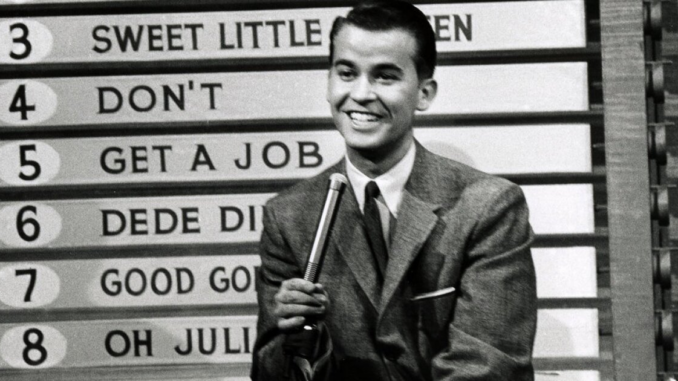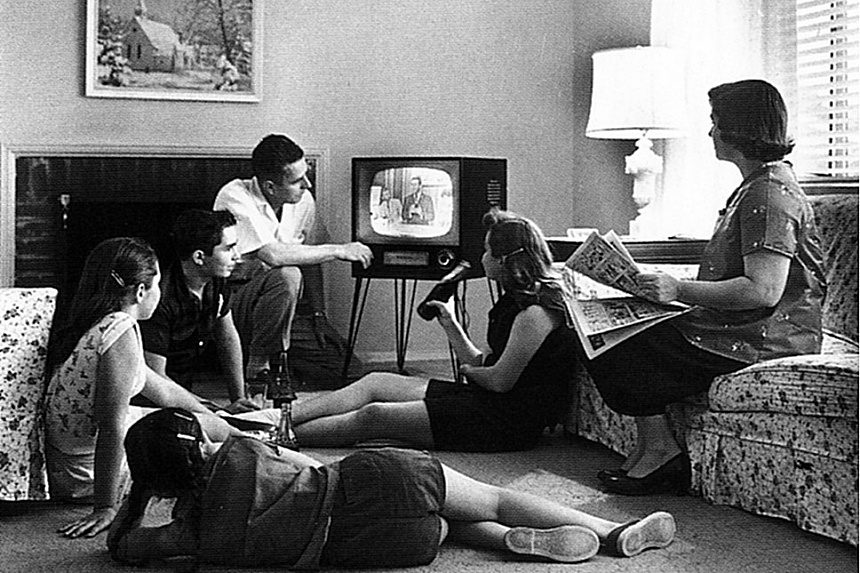
It wasn’t just a TV show. It was a ritual.
In the 1950s, every weekday afternoon at 3 o’clock, living rooms across America would light up with the sound of music and the sight of teenagers dancing. American Bandstand wasn’t flashy. It didn’t need to be. It was live, it was real, and for millions of us—it was ours.

The Warm Glow of the TV Set
TVs were still new in many homes. Most screens were black and white, with dials you had to turn by hand. Antennas stood tall on rooftops, and picture quality depended on the weather. But none of that mattered when Bandstand came on.

The house got quiet. Moms stopped ironing. Kids dropped their homework. We sat cross-legged on the floor, eyes locked on the screen, as music from Philadelphia filled the room.
They Were Just Like Us
What made Bandstand so special was the dancers. They weren’t celebrities. They weren’t actors. They were real teenagers—just like us. They had braces, awkward smiles, and hairdos we tried to copy in the mirror.

Some of us had a favorite couple. Others memorized the latest dance moves. And once in a while, we imagined ourselves on that dance floor, wondering if we’d ever get the chance.
The Soundtrack of Our Youth
The music was everything. We heard Elvis, Frankie Lymon, Paul Anka, Connie Francis. Some songs made us cry, some made us fall in love, and others made us want to get up and twist around the living room rug.
Bandstand didn’t just play music. It introduced it. Before streaming, before CDs, even before many had radios in their own rooms—this was how we discovered what was new.

A Simple Joy in a Complicated Time
The world was changing fast—civil rights, Cold War, shifting culture—but for 30 minutes a day, Bandstand gave us something joyful, familiar, and safe.
It connected generations. Teenagers watched for the music. Parents watched to keep an eye on the trends. And somehow, both found something to smile about.

We Still Remember
Ask anyone who grew up in the ’50s what they remember about American Bandstand, and you’ll likely see their eyes light up. They’ll name their favorite dancer. They’ll hum a tune. And they’ll tell you how, for a little while each afternoon, the whole country moved to the same beat.
Because American Bandstand wasn’t just something we watched. It was something we felt.